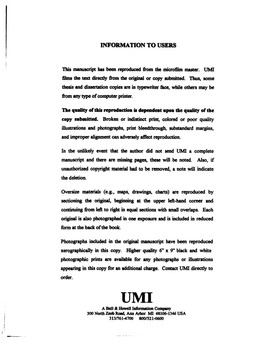| dc.contributor.advisor | Deming, David, | en_US |
| dc.contributor.author | Cranganu, Constantin. | en_US |
| dc.date.accessioned | 2013-08-16T12:29:53Z | |
| dc.date.available | 2013-08-16T12:29:53Z | |
| dc.date.issued | 1997 | en_US |
| dc.identifier.uri | https://hdl.handle.net/11244/5554 | |
| dc.description.abstract | Twenty-seven new heat-generation estimates, along with 22 previously published data, are used to create a heat generation map of Oklahoma. The range of heat production estimates is 1.1-3.5 $\mu$W/m$\sp3, $ with an average of 2.5 $\mu$W/m$\sp3.$ | en_US |
| dc.description.abstract | The heat flow regime in Oklahoma is primarily conductive in nature, except for a zone in northeast. Transient effects due to sedimentary processes and metamorphic/igneous activity, as well as past climatic changes, do not significantly influence the thermal state of the Oklahoma crust. Heat flow near the margins of the Arkoma and Anadarko Basins may be depressed or elevated by 5-13 mW/m$\sp2$ by refraction of heat from sedimentary rocks of relatively low thermal conductivity (1-2 W/m-K) into crystalline basement rocks of relatively high thermal conductivity ($\sim$3-4 W/m-K). The heat generation-heat flow relationship shows a modest correlation. The relatively high heat flow ($\sim$70-80 mW/m$\sp2)$ in part of northeastern Oklahoma suggests that the thermal regime there may be perturbed by regional groundwater flow originating in the fractured outcrops of the Arbuckle-Simpson aquifer in the Arbuckle Mountains. | en_US |
| dc.description.abstract | Twenty new heat flow values are incorporated, along with 40 previously published data, into a heat flow map of Oklahoma. The new heat flow data were estimated using previous temperature measurements in boreholes made by American Petroleum Institute researchers and 1,498 thermal conductivity measurements on drill cuttings. | en_US |
| dc.description.abstract | The mean of 20 average thermal gradients is 30.50$\sp\circ$C/km. In general, thermal gradients increase from SW (14.11$\sp\circ$C/km) to NE (42.24$\sp\circ$C/km). The range of 1,498 in situ thermal conductivity measurements (after corrections for anisotropy, in situ temperature, and porosity) is 0.90-6.1 W/m-K; the average is 1.68 W/m-K. Estimated near-surface heat flow ($\pm$20%) at 20 new sites in Oklahoma varies between 22 $\pm$ 4 mW/m$\sp2$ and 86 $\pm$ 17 mW/m$\sp2; $ the average is 50 mW/m$\sp2.$ | en_US |
| dc.format.extent | xiii, 164 leaves : | en_US |
| dc.subject | Terrestrial heat flow Oklahoma. | en_US |
| dc.subject | Geology. | en_US |
| dc.subject | Geophysics. | en_US |
| dc.title | Heat flow in Oklahoma. | en_US |
| dc.type | Thesis | en_US |
| dc.thesis.degree | Ph.D. | en_US |
| dc.thesis.degreeDiscipline | Conoco Phillips School of Geology and Geophysics | en_US |
| dc.note | Source: Dissertation Abstracts International, Volume: 58-09, Section: B, page: 4676. | en_US |
| dc.note | Chair: David Deming. | en_US |
| ou.identifier | (UMI)AAI9810311 | en_US |
| ou.group | Mewbourne College of Earth and Energy::Conoco Phillips School of Geology and Geophysics | |
